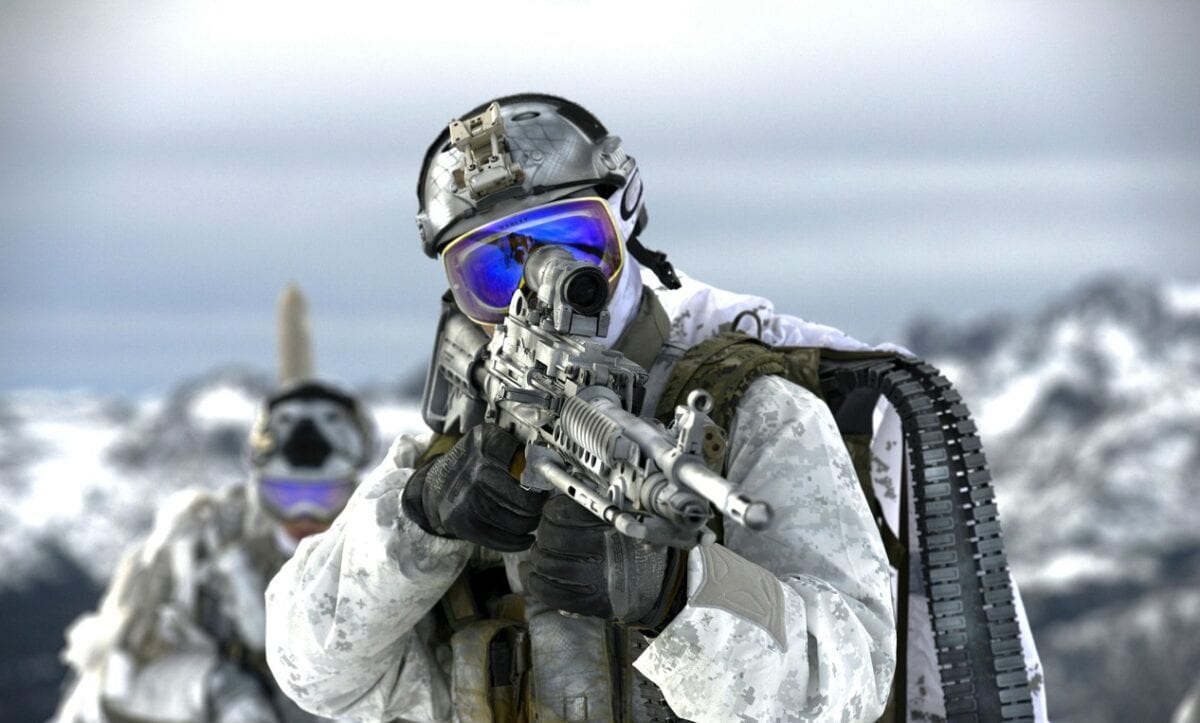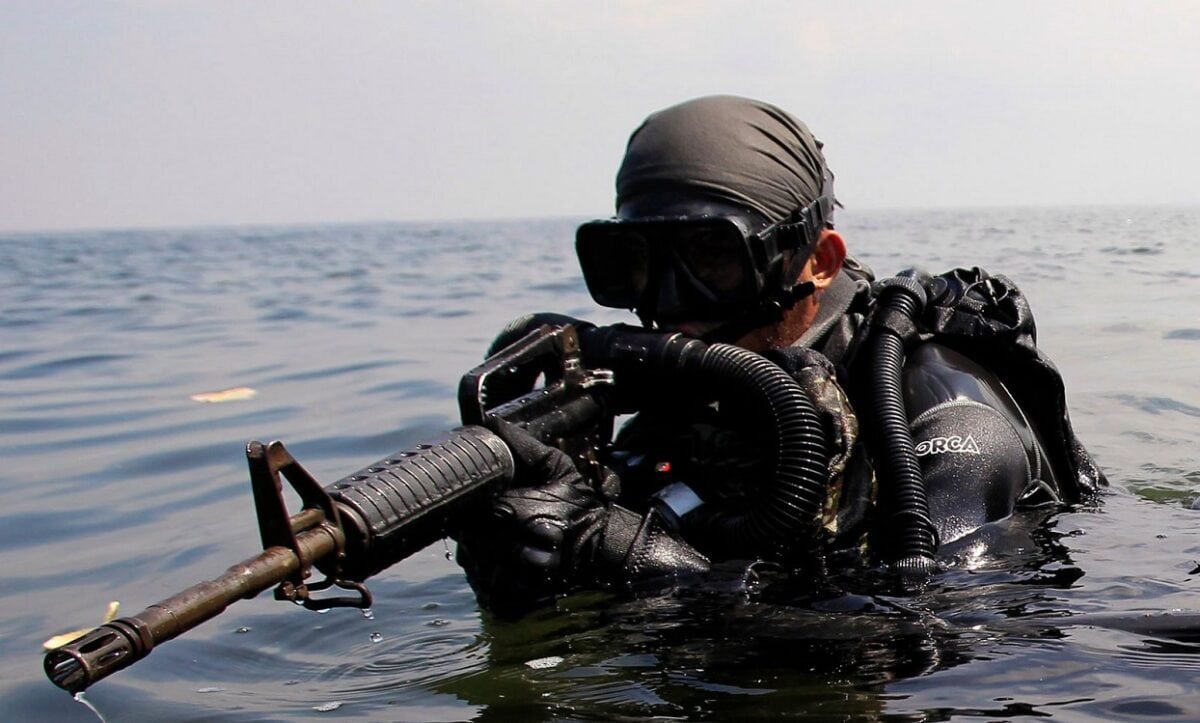What makes the U.S. Navy SEALs Unstoppable? Of all the units in the U.S. Special Operations community, you probably know the most about the U.S. Navy SEALs.
There are countless books, documentaries, and several movies about SEALs. There is something about these operators that has seized the general public’s imagination. It must be the allure and mystery of the sea and the tremendously difficult training that stirs up so much interest.
(Subscribe to Our YouTube Channel Here. Check out More 19FortyFive Videos Here)
Let’s take a look at the SEALs and see if we can shine a light on these maritime and land warfare operators:
Short History of the SEALs
The Navy SEALs were hatched from the Underwater Demolition Teams (UDTs) or “frogmen” from World War Two who operated secretly for the Office of Strategic Services. UDTs mainly prepped beaches for amphibious missions during the war in the Pacific and on D-Day. They conducted reconnaissance and blew up hazards and obstacles.
This kept the enemy from stopping landings from the main element of troops attacking from landing craft. Other types of “frogmen” in World War Two units were “Scouts and Raiders” and “Naval Combat Demolition Units.” In 1962, President John F. Kennedy specially acknowledged the existence of SEALs – an acronym that stands for Navy Sea, Air, and Land Teams.
What Are the Missions?
The main aspect of SEAL warfare is unique infiltration and exfiltration in and out of combat zones. The Navy can insert SEALs by many different means – whether it’s a free-fall HALO jump out of an airplane or being deployed by boat or submarine – the SEALs can get to the battlefield in a number of ways.
The maritime mission is the main effort for SEALs. They can swim underwater to blow up ships or board them to rescue hostages and eliminate terrorists. SEAL snipers have killed pirates who threatened shipping lanes. Sometimes the mission is to collect intelligence or kick doors down in direct-action raids. They still have the UDT mission of working to prep for amphibious landings. It’s not just maritime environments – the SEALs can operate in deserts, mountains, and extreme Arctic weather.
How Do You Become a SEAL?
The usual route to becoming a SEAL is to directly enlist in the Navy and complete boot camp in Great Lakes, Illinois. At that point, trainees can attend BUD/S or Basic Underwater Demolition/SEAL School. It used to be that trainees would first acquire a rating and be required to serve in the regular Navy to gain experience and then later apply to BUD/S. Now the path is more direct for new enlistees, but fleet sailors can still attend BUD/S.
What Is BUD/S?
BUD/S is probably what you are most familiar with when it comes to SEAL training. Trainees start with an 11-week indoctrination phase consisting of Naval Special Warfare Preparatory School and Basic Orientation. The next stage of BUD/S lasts six months. Trainees first show their physical skills with endless calisthenics, timed runs, “log PT,” and obstacle courses. Teamwork is sharpened with small boat seamanship. They also spend a substantial amount of time in the cold Pacific waters off Coronado, California. It’s best to master the combat side stroke before BUD/S.
Long Training Pipeline
This first phase is seven weeks of basic conditioning that includes the infamous “Hell Week” when trainees are pushed to their physical and mental limits. Trainees can quit the course by ringing a bell – about 75-percent of each class does this. Then the SEALs get to the bread and butter training of combat diving. This lasts seven weeks.
Once trainees make it past this period, they progress to land warfare training for seven weeks of instruction on weapons and tactics. After these three phases, SEAL trainees attend basic parachute school for three weeks. Training does not stop there. It’s on to SEAL qualification training for 26-weeks before trainees receive their Trident, nicknamed the “Budweiser.” This is time to celebrate, however training seems to never end. Next is “18 months of pre-deployment training and intensive specialized training,” according to the Navy.
Global Service
There are eight SEAL teams one can be assigned to. SEALs served in Vietnam, Panama, Somalia, and Afghanistan, and those are just the known missions. You can bet a SEAL will have served all over the world during his career.

US Navy SEALs. Image Credit: Creative Commons.

Image: Creative Commons.
There are constant debates and arguments over which branch of the special operations community trains the hardest and attracts the most elite operators. You can’t escape that the SEALs have so many different missions, so they may require the most extensive and diverse amount of training that attracts an individual who is what psychologists call a “high sensation seeker.” They definitely seek the most dangerous jobs.
Now serving as 19FortyFive’s Defense and National Security Editor, Brent M. Eastwood, PhD, is the author of Humans, Machines, and Data: Future Trends in Warfare. He is an Emerging Threats expert and former U.S. Army Infantry officer. You can follow him on Twitter @BMEastwood.

